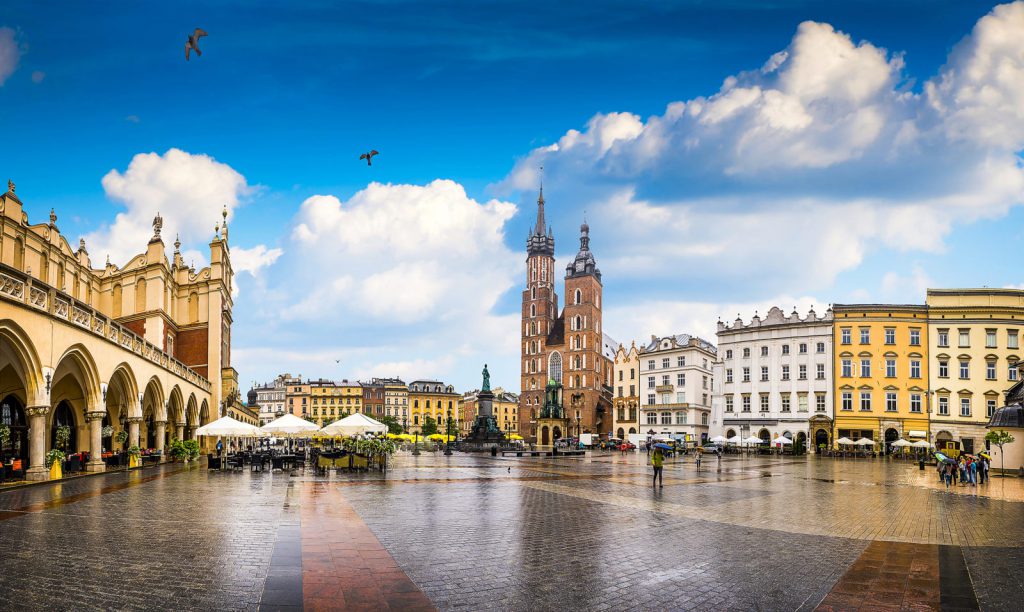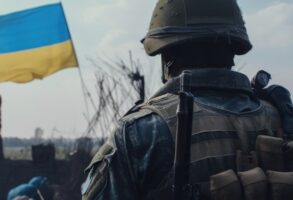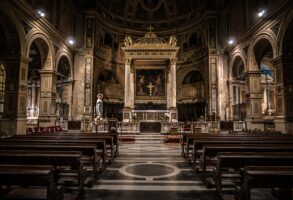
Published July 22, 2015
Cracow — When I first came here 24 years ago, Poland’s cultural and spiritual capital was just beginning to recover from 50 years of deferred maintenance.
Unlike every other major Polish city, Cracow was not flattened by World War II. The Wehrmacht got here too quickly in September 1939 to do much damage; Cracow was the gangster-Gauleiter Hans Frank’s headquarters during the Occupation; and the legions of the Thousand-Year Reich left in a hurry in January 1945, intent on destroying the evidence of their genocide at nearby Auschwitz-Birkenau. So Cracow was spared the gratuitous devastation that was one hallmark of the Reich’s impact on the bloodlands of Central and Eastern Europe.
The ensuing four and a half decades of Communism almost accomplished the destruction the Nazis didn’t have time to effect.
In the immediate postwar years, Cracow returned Poland’s highest anti-Communist vote in a bogus referendum and a subsequent bogus election. The payback from the Polish United Workers’ Party was Nowa Huta: a new industrial town, built from scratch east of the city, where both steel and New Communist Man, Polish-style, would be fabricated. The drab, socialist-realist architecture of Nowa Huta, where buildings were arranged on a rigid grid divided by oversized boulevards for May Day parades, was Stalinism’s answer to the asymmetries of the glorious Cracow Old Town with its noble mansions, gabled burgher houses, Gothic and Baroque churches, and narrow winding streets, all surrounded by the great greensward of the Planty and leading the eye and spirit up to Wawel, a rocky promontory on the left bank of the Vistula housing the Royal Castle and the cathedral in which Poland’s greatest heroes are buried. The romance of the idea of “Poland” during the years when Poland-as-state was erased from the map of Europe was embodied in Cracow Old Town. According to Stalinist orthodoxies, the robotnik of the dictatorship of the proletariat would be embodied by the gray, synthetic functionality of Nowa Huta.
In fact, there weren’t a whole lot of New Communist Men (or women, for that matter) fabricated in Nowa Huta; in Stalin’s famous putdown, building Communism in Poland was like “fitting a saddle to a cow.” Nonetheless, Nowa Huta was as destructive as its planners intended, if destructive in a different way: The pollution from its exhaust chimneys, carrying microscopic shards of steel in the breeze, began to eat away at the fabric of Cracow Old Town. Not only were its buildings gray-to-black when I first came here in 1991; the plaster and stone of the magnate mansions that ring the great Main Square — the largest public space in Europe — were crumbling after being scoured for decades by trillions of micro Brillo pads.
Cracow’s first mayor, post-Communism, was Jacek Woźniakowski, a distinguished art historian, a Solidarity activist, and a secret courier between the Solidarity leadership and Pope John Paul II during the 1981–83 martial-law period. Jacek, a great friend and counselor in matters Polish, got the Cracow Old Town listed as a UNESCO World Heritage Site, which gave him the legal muscle to insist that scrubbers be installed on the smokestacks of Nowa Huta; so the slow-motion erosion of one of the world’s great urban environments was stopped. Now, the bright golds and greens and the subtle pastels of the magnate homes ringing the Main Square have been restored. The once-blackened Basilica of Our Lady of the Assumption, the Mariacki, shines brilliantly in the summer sun, its golden copper roof complementing the amazing brickwork and asymmetrical towers. The Drapers’ Hall, the Sukiennice, at the center of the Square now features a magnificent museum of the history of the city, below ground level. As in centuries past, the Main Square of the Old Town has become one of the world’s premier crossroads, a place of encounter between languages and cultures: a borderland that is no longer, for the moment at least, part of the bloodlands.
But there are worries.
* * *
My hosts during the 24th annual assembly of the Tertio Millennio Seminar on the Free Society — a three-week crash course in Catholic social doctrine from Pope Leo XIII to Pope Francis, which I’ve had the honor to lead since 1999 — are the Polish Dominicans, many of whom have extensive experience of the United States. A few days after I arrived, one of these men, a former chaplain at Columbia University, stopped me outside the Dominican priory and asked how the U.S. presidential campaign was going. I said that it was far too early to tell, media obsessions notwithstanding. Then this learned man looked at me very seriously and said, “You know, your presidential election next year will have a greater impact on Poland’s future than our presidential election a few months ago.”
It was a sobering thought, given the frivolity that seems to be dominating Campaign 2016, at least when viewed from the banks of the Vistula River. How does one explain to a Pole, who understands America’s impact on the world better than the current president of the United States, that weeks have been wasted on the Donald Trump Reality Show? How does one explain a month spent debating the Confederate battle flag, while the black flag of ISIS waves over increasing swaths of the Middle East? How does one explain the phenomenon of Bernie Sanders, who seems to be channeling the ghosts of what was once called Real Existing Socialism in these parts? When I mentioned to another Polish friend that the estimable Scott Walker had had to reply to a media inquisition about his views on Darwin, the response I got was precisely what I would have said during that farce: “I’m far more interested in whether Scott Walker can find Ukraine on a blank map of Europe than in his views on evolutionary biology.”
I detected little enthusiasm here for Hillary Clinton. With Putin straining at the bit next door, Poles and other east-central Europeans are not much interested in American identity politics; two doses of that, in 2008 and 2012, were more than sufficient, as were the consequent “resets” that seem to have reset winners and losers in the Cold War. Serious people in this part of the world want an adult POTUS who will assemble an administration staffed by people who, unlike Ben Rhodes et al., know something about history, especially Russian history. Polish seriousness about the perilous state of the post-Obama world is something from which Americans, and especially Republicans, ought to learn (the leading elements in the Democratic party seeming beyond education on this point, unfortunately).
* * *
My seminar students this year came from the United States, Australia, Lithuania, Poland, Russia, Slovakia, and Ukraine. They were, without exception, impressive young people, most of whom had finished a first degree and were working on a second (or third). They are more mature, and pious, and maturely pious than my friends and I were at their age. But over the 24 years of the Tertio Millennio Seminar, my faculty colleagues and I have noticed that our students’ cast of mind has changed.
In 1992, when we began, all was optimism. By refusing to concede to the tyranny of the possible, and by doing, as well as exhorting, John Paul II had led a revolution of conscience in this part of the world. That revolution of conscience had been responsible in no small part for the special, nonviolent character of the Revolution of 1989 and the subsequent collapse of the Soviet Union. So it indeed seemed possible that a “century of tears” would “give birth to a new springtime of the human spirit,” as John Paul put it at the U.N. in 1995. The door was open to a human future that would vindicate the sacrifices of the past and fulfill the bright hopes with which the 20th century, the most sanguinary in history, had begun.
There was little such optimism, although there was hope and determination, among this year’s seminar students. Part of their sobriety about the immediate future involves Mr. Putin and the new form of hybrid war — part kinetic, part propagandistic — that he is waging in Eastern Europe. The Ukrainian students, of course, have been directly affected by Russia’s war on Ukraine, as has virtually every family in Ukraine. The Lithuanians are rightly concerned that they might be next on the Bear’s menu. The Poles, stalwart supporters of U.S. efforts in Afghanistan and Iraq, have not forgotten that their “reward” was Obama’s 2009 bugout on missile defense (announced on the 70th anniversary of the Soviet invasion of Poland during World War II, no less). Everyone wonders what happened to American leadership in NATO, and whether the alliance’s pledge to regard an attack on one as an attack on all remains in force.
But there was more to this changed attitude toward the future than what most of my students (and all of my Polish friends) perceive as the folly of the Obama administration’s policy toward a revanchist Russia. My students and friends are also deeply concerned about the cultural sludge rolling across Europe, a tidal wave of libertinism that threatens to eradicate traditional culture and traditional moral norms. Some of that wave is generated by Brussels and the out-of-control courts of the European system; some of the momentum comes from the United States, in ways that might surprise Americans.
Thus one of my Ukrainian students told me that, prior to Obergefell v. Hodges, “gay marriage” barely registered on the radar screen of Ukrainian concerns; with the Bear gnawing away at the eastern part of the country, “gay marriage” was not an issue commanding a lot of attention, much less passion. But within days of the SCOTUS decision imposing “gay marriage” across America, the public atmosphere changed, my student said. “People are now saying, ‘If the United States, a great country, is for this, it must be a good thing.’” This may be music to the ears of the LGBT bureaucracies at the State Department and the U.S. Agency for International Development; it should be cause for deep concern among those worried that Putin is playing the decadence card all too effectively against a West in which the New Normal is “Anything Goes.”
* * *
There has been some good news on the Ukraine front during my weeks in Cracow, however. On July 16, Pope Francis approved a decree recognizing the heroic virtues of Metropolitan Andrey Sheptytsky, who led the Ukrainian Greek Catholic Church from the early years of the 20th century to the last years of World War II, playing a huge role in the creation of modern Ukrainian cultural and national consciousness in the process. Sheptytsky was also a Holocaust rescuer and a bridge between often-contentious worlds: between the two wings of the Christian world (he was born a Latin-rite Catholic and became a Greek Catholic monk and bishop), and between Christianity and Judaism. In a place where religious toleration has been too often wanting, and interreligious dialogue even more rare, Andrey Sheptytsky represented a nobler path into the future, in which differences would be engaged within a bond of civility and respect, thus forging a genuine tolerance.
Another sign that old animosities may be fading in response to John Paul II’s example and the exigencies of Russian geostrategic hardball was on display on July 8 at the famous Jasna Góra monastery in Częstochowa, home of the icon of the Black Madonna. The Pauline monks of Jasna Góra, the shrine that embodies Polish nationalism at its most intense, decided some months ago that, whatever the often-brutal history that had long divided Ukraine and Poland, they would celebrate a daily Mass for Ukraine, its integrity, and its future peace. Four days after America’s Independence Day, that Mass was celebrated by Archbishop Thomas Gullickson, a native South Dakotan currently serving with distinction as apostolic nuncio in Kyiv. Archbishop Gullickson’s homily spoke movingly of the suffering of Ukrainian families, few of whom have been unaffected by the brutalities of Russian troops and their local hirelings in the Donbas. The Vatican’s ambassador also thanked the monks of Jasna Góra for their solidarity, which seemed to presage something of the kind of future outlined in 1995 by John Paul II (whose bloodstained sash, a relic of the 1981 assassination attempt, hangs beside the Black Madonna).
* * *
Back in Cracow, an unexpected treat awaited me in the archives of the Basilica of Our Lady of the Assumption, the great, Gothic Mariacki, whose towers dominate the city. There, the basilica archivist, my friend Agata Wolska, showed me six panels, currently being restored, of an extraordinary altarpiece looted by the Nazis in their kleptocratic determination to “get it all” (if I may paraphrase the Matt Damon character in The Monuments Men). Painted on wood by the German Renaissance artist Hans Süss von Kulmbach, the six panels are three-quarters of a composition from 1515–16, depicting the story of St. Catherine of Alexandria: forgotten by present-day Catholic feminists but a woman of parts who converted an empress, disputed with (and converted) philosophers, and was eventually martyred by beheading.
Hans Frank cast his beady, covetous eye on all such Church-owned artworks in Cracow; the resultant theft sent the St. Catherine altarpiece on a pilgrimage to Nazi stolen-art depositories, the mansion of the Red Baron, and a Silesian castle. Two of the original eight Kulmbach paintings remain missing, a silent witness to the cultural barbarity that matched the human barbarity of German National Socialism. The remaining six panels, for their part, are a reminder that, even in the bloodlands, there are sometimes happy endings.
— George Weigel is Distinguished Senior Fellow of Washington’s Ethics and Public Policy Center, where he holds the William E. Simon Chair in Catholic Studies. His new book, City of Saints: A Pilgrimage to John Paul II’s Kraków (co-authored by Carrie Gress and Stephen Weigel), will be published by Image in late October.








